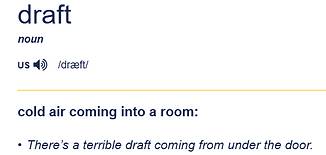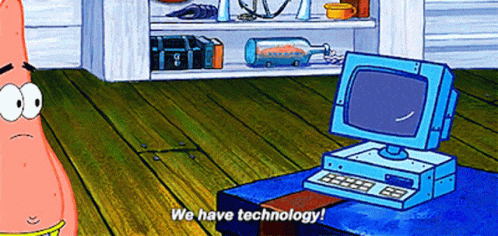Improved Language Skills
This dubbing task helped me improve my intonation, emotional engagement, and confidence in English speaking. By repeatedly listening to SpongeBob’s tone and trying to match his speech patterns, I became more aware of how intonation affects meaning and emotion in spoken English. I noticed that all the characters often change their pitch to show surprise, excitement, or sarcasm. Mimicking these emotional shifts helped me sound more expressive. Practicing intonation also made me more conscious of rhythm and stress in English,

which contributed to my overall speaking fluency. When my group member and I practiced together, their feedback also helped me improve my English speaking skills. Their support and compliments enhanced my confidence, which made me feel less nervous when performing the final presentation.
Collaborative Learning
It was a pleasure to work with my group members, Debbie, Sharon, and Yihan. Collaborating with them played an important role in enhancing my confidence when performing in front of others. In the beginning, I was afraid of doing the dubbing task because our chosen cartoon, SpongeBob SquarePants, requires exaggerated emotions. I overcame this fear when we shared useful tips with each other on how to imitate the characters more accurately, such as emphasizing certain syllables in a word or certain words in a sentence to make us sound more emotionally engaging. In class, we practiced together and gave each other feedback, which helped me identify pronunciation mistakes and unnatural speech patterns. Moreover, I noticed that Debbie’s pronunciation was excellent, which motivated me to practice more. Working with peers also made this learning process more interesting and interactive. My group members were very supportive, which helped me become confident when performing in front of the class.




.png)
.png)
Progress over Phases

From video search to the final presentation, I noticed several improvements in my speaking performance. At the beginning, during the video search and subtitle translation, I mainly focused on understanding the meaning. However, as I began recording my voice and rehearsing, I started paying more attention to pronunciation and intonation. I also learned how to coordinate my speech with the character's lip movements, which was challenging at first
but became easier with continuous practice. By the time we presented the clip in front of everyone, I felt like I was able to speak fluently and with full emotion. When doing the final presentation, I felt confident in performing the video dubbing.
My Biggest Challenge
The most challenging phase for me was the rehearsal. I originally played the character of SpongeBob, but in this episode, SpongeBob pretends to be Squidward. For that reason, I had to imitate SpongeBob’s voice while also parodying Squidward’s tone. This was especially difficult because Squidward has a very unique tone and nasal voice. Sharon, who played the character of Squidward, also encountered the same challenge in mimicking Squidward’s special sounds. Trying to sound like him required us to control our voices in a way that we weren’t used to. After trying different ways, we came up with a solution, which was pinching the nose while speaking. By doing so, we sounded more like Squidward. However, we faced a new problem that we slurred our words and could not pronounce them clearly. What’s worse, it was hard to breathe while pinching our noses. We had to learn how to breathe and exhale properly. Otherwise, we would feel like we were choking. To address these difficulties, we put a lot of effort into improving our articulation and breath control, learning how to speak clearly while maintaining Squidward’s nasal tone without running out of air or sounding muffled. Thankfully, our hard work paid off. I felt satisfied that our performance in the final presentation made our classmates laugh.
The Role of ChatGPT

We did not use ChatGPT in this module because we found that authentic material was much more helpful for translating the subtitles and practicing dubbing. SpongeBob SquarePants is a well-known cartoon with its own catchphrases and unique humor. After watching the Chinese version, we noticed some distinctive lines that should be preserved in the original English version to retain their comedic effect. For instance, in the
Chinese version, Squidward describes SpongeBob and Patrick as 討厭的小鬼. I thought it could be translated as “annoying brats,” but we found that the original English version uses “barnacle heads.” After discovering this phrase, I searched online and realized that "barnacle head" is a special insult used by Squidward. If we had not found the original English version, we would have lost the unique characteristic of Squidward.
Although we referred to the official English version, we did not use all the original lines because the meanings of some lines in the Chinese version are different from the English version. For example, one of the Chinese lines is 還有一股可怕的臭味, but the English version is “There is a terrible draft.” According to the Cambridge Dictionary, “draft” means cold air, not a smell. Therefore, we translated those subtitles ourselves to ensure every English subtitle matched the intended meaning of the Chinese version.


When it came to dubbing practice, imitating the original English version helped me deliver the lines with appropriate emotion. I did try using ChatGPT once to practice speaking the lines, but it did not point out any mistakes about my English speaking skills. It gave me a lot of compliments, which made me feel good, but this way did not help me improve my oral performance as much as I had hoped. Instead, peer feedback was much more helpful for me to adjust my tone and pronunciation.


Future Teaching
I would like to use video dubbing in my future teaching. From this experience, I have found dubbing to be a fun and engaging way for students to practice English speaking skills, especially in terms of pronunciation, intonation, rhythm, and emotional expression.

However, I will decide whether to include subtitle translation based on students’ English proficiency. From this project, I learned that translators need to search the background of the cartoon or movie, understand the personalities of the characters, and recognize the use of slang. This can be especially challenging for non-native English speakers who aim to produce native-like translations.
Another concern is video editing and adding soundtracks. I really admired how my group member, Yihan, handled these technical tasks. As a future English teacher, I plan to learn how to use video editing tools more effectively so I can better support my students in similar projects. If my students lack strong digital literacy skills, I might instead ask them to simply mute the original audio. Based on this experience, I noticed that our live performances were funnier than just playing the video. This could also be time-saving for students, allowing them to concentrate on practicing English speaking skills.
Despite these challenges, I think video dubbing is far more interesting than traditional oral practice. In the future, I will also design dubbing projects where students work in groups to choose short clips and practice voice acting. I believe this teaching method will help students build confidence and improve their oral skills in a collaborative and playful way.


